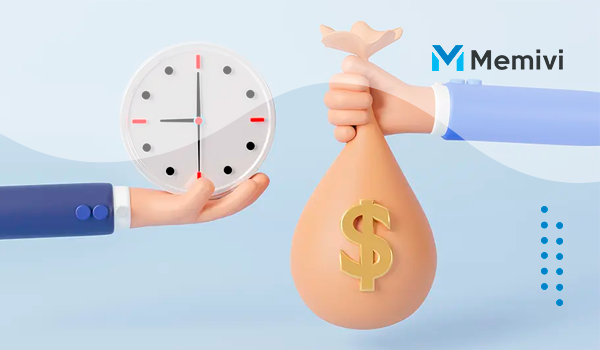
Imagine this: Your car breaks down on the way to an important meeting. Your furnace quits in the middle of a Canadian winter. Or worse—you suddenly lose your main source of income. Without savings, these emergencies can spiral into financial disasters.
In Canada, where housing costs, inflation, and unexpected expenses are a reality, an emergency fund isn’t a luxury—it’s a necessity. But how much do you really need to save? And how can you build it without feeling overwhelmed?
This guide breaks down exactly how much Canadians should set aside for emergencies, why it’s crucial for your financial health, and practical steps to grow your safety net—starting today.
Why Every Canadian Needs an Emergency Fund
1. Life Is Unpredictable—Your Finances Shouldn’t Be
No one plans for emergencies, but they happen to everyone. A medical bill, urgent home repair, or sudden job loss can derail your finances if you’re unprepared.
Financial experts recommend saving three to six months’ worth of living expenses. For the average Canadian household, that means:
– Single person? Aim for $5,000–$10,000
– Couples? Target $10,000–$20,000
– Families? $15,000–$30,000 provides a solid cushion
But even starting with $1,000 can prevent small crises from becoming major setbacks.
2. Avoid Debt Traps and High-Interest Stress
Without savings, many Canadians turn to credit cards or payday loans in emergencies—leading to crushing interest rates and long-term debt. An emergency fund keeps you in control, so you never have to borrow just to survive.
3. More Than Just Survival—It’s About Opportunity
An emergency fund does more than cover unexpected bills. It gives you the freedom to:
– Take career risks (like switching jobs or starting a business)
– Handle medical issues without financial panic
– Say “yes” to life opportunities without fear
4. Beat Inflation and Rising Costs
Canada’s cost of living keeps climbing. Rent, groceries, and utilities are more expensive than ever. A strong emergency fund ensures you stay ahead—not just scraping by.
How Much Should You Really Save? (Customized for Canadians)
The 3-Tier Savings Strategy
Not everyone needs the same amount. Follow this approach based on your situation:
Tier 1: Basic Safety Net ($1,000–$5,000)
– Covers minor emergencies (car repairs, appliance replacements)
– Ideal for those just starting to save
Tier 2: Full Protection (3–6 Months of Expenses)
– Shields against job loss or major unexpected costs
– Best for homeowners, parents, or single-income households
Tier 3: Ultra-Secure (6–12 Months of Savings)
– Recommended for freelancers, business owners, or high-cost areas (Toronto, Vancouver)
– Provides maximum financial freedom
Calculate Your Personal Emergency Fund
1. Add up essential monthly expenses (rent/mortgage, groceries, utilities, debt payments).
2. Multiply by 3 (minimum) or 6 (ideal).
3. Adjust for your risk factors (job stability, dependents, health needs).
Example: If your basics cost $3,000/month, your emergency fund should be $9,000–$18,000.
How to Build Your Emergency Fund—Fast and Stress-Free
1. Start Small, But Start Now
Even $20/week adds up to $1,040 in a year. Automate transfers so you save without thinking.
2. Cut One Unnecessary Expense
– Skip takeout twice a month? Save $50+
– Cancel unused subscriptions? $10–$30/month
– Brew coffee at home? $100+/month
Small changes make a big difference over time.
3. Use Windfalls Wisely
– Tax refunds
– Bonuses
– Gift money
– Side hustle earnings
Redirect just 50% of unexpected cash to supercharge your savings.
4. High-Interest Savings Account (HISA) or TFSA
Keep your emergency fund liquid but growing. HISAs offer 4–5% interest, while TFSAs provide tax-free growth.
5. Make It Untouchable (But Accessible)
– Separate account from daily spending
– No debit card attached (to resist temptation)
– Only for real emergencies (not vacations or shopping)
Common Mistakes to Avoid
1. Waiting for “The Right Time” to Start
There’s never a perfect moment. Start today, even with $50.
2. Keeping Savings in a Chequing Account
You’ll spend it. Use a dedicated savings account instead.
3. Overcomplicating It
Don’t stress about hitting 6 months immediately. Progress beats perfection.
4. Ignoring Rising Costs
Re-evaluate your fund yearly—especially if your rent or family size changes.
Your Financial Safety Net Starts Today

An emergency fund isn’t just money in the bank—it’s peace of mind, freedom from debt, and confidence in your future. Whether you’re starting with $500 or working toward $20,000, every dollar moves you closer to unshakable financial security.
Don’t wait for the next crisis to remind you. Take control now, and build the safety net you deserve.
Start Saving Today—Your Future Self Will Thank You
By following this plan, you’ll not only protect yourself from financial shocks but also gain the confidence to pursue bigger goals—without fear. How much should you save for emergencies in Canada? The answer is simple: Start with what you can, and keep growing. Your financial freedom begins now.


 Household Spending Surge: How Equity Markets Could React Fast <p class='sec-title' style='line-height: normal; font-weight: normal;font-size: 16px !important; text-align: left;margin-top: 8px;margin-bottom: 0px !important;'> A sudden rise in consumer spending may reshape equity market trends. Discover how this shift impacts investors, stock sectors. </p>
Household Spending Surge: How Equity Markets Could React Fast <p class='sec-title' style='line-height: normal; font-weight: normal;font-size: 16px !important; text-align: left;margin-top: 8px;margin-bottom: 0px !important;'> A sudden rise in consumer spending may reshape equity market trends. Discover how this shift impacts investors, stock sectors. </p>  Hot Canadian Stocks to Watch in 2025: Discover Top Opportunities <p class='sec-title' style='line-height: normal; font-weight: normal;font-size: 16px !important; text-align: left;margin-top: 8px;margin-bottom: 0px !important;'> Tracking hot Canadian stocks is key if you’re aiming for steady growth and solid returns. </p>
Hot Canadian Stocks to Watch in 2025: Discover Top Opportunities <p class='sec-title' style='line-height: normal; font-weight: normal;font-size: 16px !important; text-align: left;margin-top: 8px;margin-bottom: 0px !important;'> Tracking hot Canadian stocks is key if you’re aiming for steady growth and solid returns. </p>  High-Speed Rail Canada: Connecting Cities with Innovation and Speed <p class='sec-title' style='line-height: normal; font-weight: normal;font-size: 16px !important; text-align: left;margin-top: 8px;margin-bottom: 0px !important;'> Get ready for a groundbreaking travel revolution — Canada’s high-speed rail promises to connect major cities faster, smarter, and more sustainably. </p>
High-Speed Rail Canada: Connecting Cities with Innovation and Speed <p class='sec-title' style='line-height: normal; font-weight: normal;font-size: 16px !important; text-align: left;margin-top: 8px;margin-bottom: 0px !important;'> Get ready for a groundbreaking travel revolution — Canada’s high-speed rail promises to connect major cities faster, smarter, and more sustainably. </p>